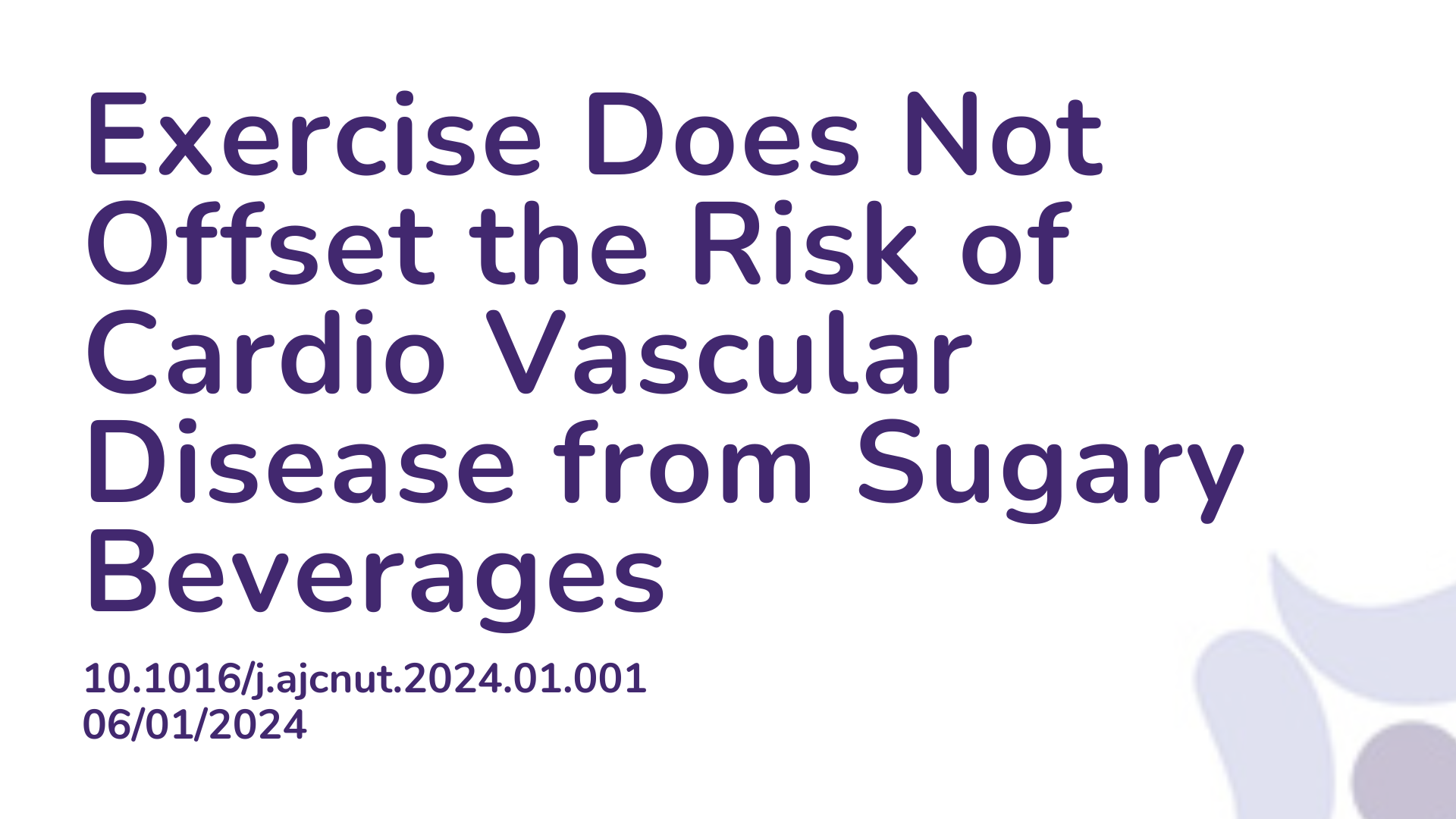Summary:
Consuming sugar-sweetened or artificially sweetened beverages is known to adversely affect health and increase the risk of cardiovascular disease (CVD), the leading cause of global mortality. This risk is attributed not only to their role in weight gain but also how they quickly elevate blood glucose and insulin levels, contributing to inflammation and atherosclerosis. Physical activity is recognized as beneficial for heart health, however it is unknown whether physical activity can offset the adverse effects of high sugary drink intake. This study aimed to investigate the independent associations between consumption of these drinks and physical activity in relation to total CVD risk, including coronary artery disease and stroke, among participants in two large prospective cohort studies in the United States. During the follow-up period, a total of 13,269 CVD events were recorded. Participants who consumed two or more servings of sugar-sweetened or artificially sweetened beverages per day had a 21% higher risk of CVD compared to those who rarely consumed them. However, no significant associations were found between consumers of these beverages and CVD risk when stratified by physical activity levels. This means that higher intake of these drinks was associated with increased CVD risk regardless of physical activity levels.
Abstract:
Background: Whether physical activity could mitigate the adverse impacts of sugar-sweetened beverages (SSBs) or artificially sweetened beverages (ASBs) on incident cardiovascular disease (CVD) remains uncertain. Objectives: This study aimed to examine the independent and joint associations between SSB or ASB consumption and physical activity and risk of CVD, defined as fatal and nonfatal coronary artery disease and stroke, in adults from 2 United States-based prospective cohort studies.
Methods: Cox proportional hazards models were used to calculate hazard ratios (HRs) and 95% CIs between SSB or ASB intake and physical activity with incident CVD among 65,730 females in the Nurses’ Health Study (1980–2016) and 39,418 males in the Health Professional’s Follow-up Study (1986–2016), who were free from chronic diseases at baseline. SSBs and ASBs were assessed every 4-y and physical activity biannually.
Results: A total of 13,269 CVD events were ascertained during 3,001,213 person-years of follow-up. Compared with those who never/rarely consumed SSBs or ASBs, the HR for CVD for participants consuming ≥2 servings/d was 1.21 (95% CI: 1.12, 1.32; P-trend < 0.001) for SSBs and 1.03 (95% CI: 0.97, 1.09; P-trend = 0.06) for those consuming ≥2 servings/d of ASBs. The HR for CVD per 1 serving increment of SSB per day was 1.18 (95% CI: 1.10, 1.26) and 1.12 (95% CI: 1.04, 1.20) for participants meeting and not meeting physical activity guidelines (≥7.5 compared with <7.5 MET h/wk), respectively. Compared with participants who met physical activity guidelines and never/rarely consumed SSBs, the HR for CVD was 1.47 (95% CI: 1.37, 1.57) for participants not meeting physical activity guidelines and consuming ≥2 servings/wk of SSBs. No significant associations were observed for ASB when stratified by physical activity.
Conclusions: Higher SSB intake was associated with CVD risk regardless of physical activity levels. These results support current recommendations to limit the intake of SSBs even for physically active individuals.
Article Publication Date: 06/01/2024
DOI: 10.1016/j.ajcnut.2024.01.001



